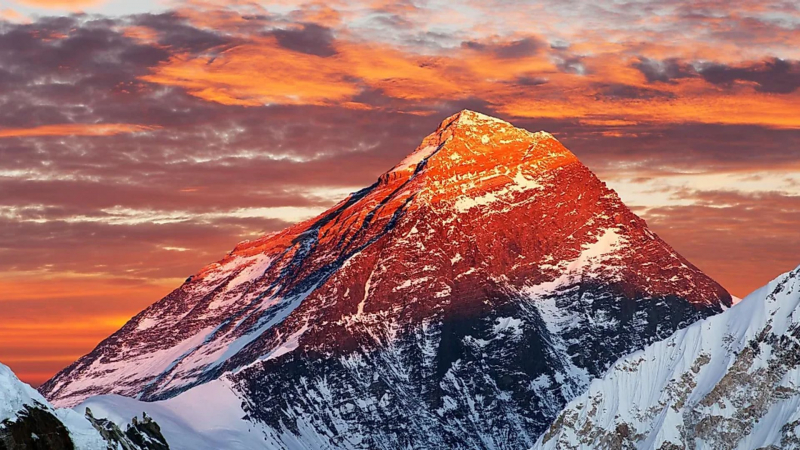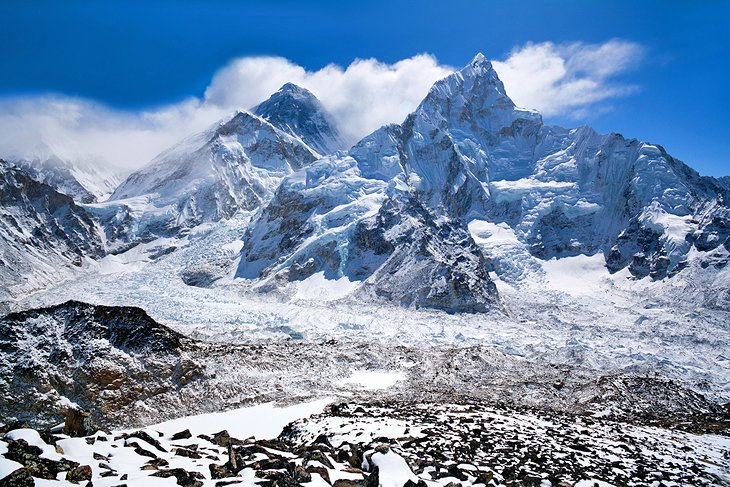Mount Everest

At 8,848.86 meters above sea level, Mount Everest is regarded as the highest point on Earth. It is guarded by Sagarmatha National Park in the Himalayas and is parked directly on the border between Nepal and Tibet.
Tibetans refer to Mount Everest as Chomolungma, which means "Goddess Mother of Snow," while Nepalese people refer to it as Sagarmatha. Because Tibet and Nepal were off limits to outsiders at the time, the mountain's native names were unknown to the British Royal Geographical Society, who gave it an English name in 1865.
Without actually climbing the mountain, you can take a helicopter tour to get as close to the summit as you can, which may be preferred by many. Everest climbing is not something that should be taken lightly. It takes about 14 days to complete the trek to base camp. It's not a weekend getaway either. You most likely won't be able to physically approach the mountain if it is snowing. Delays frequently occur.
While Mount Everest is the highest point on the planet above sea level, it is not the tallest mountain when measured from base to tip. That honor belongs to Hawaii's Mauna Kea volcano, which reaches 4.2km into the sky and 6km into the sea. Because the Earth is not a perfect sphere (it bulges out around the equator), Mount Chimborazo in Ecuador is the tallest mountain in terms of distance from the Earth's center, with a peak that is around 2km closer to the stars than Everest's.
Since Mount Everest is largely covered in stormy snow for the majority of the year, most specialized travel websites typically advise traveling between September and November or April and May. Take a flight into Beijing or Shanghai, then a train or a flight to Lhasa, and then a car or a hike to the base camp. As an alternative, you can fly into Kathmandu in Nepal and take a flight or a helicopter to the base camp.
Location: border of Nepal and China













